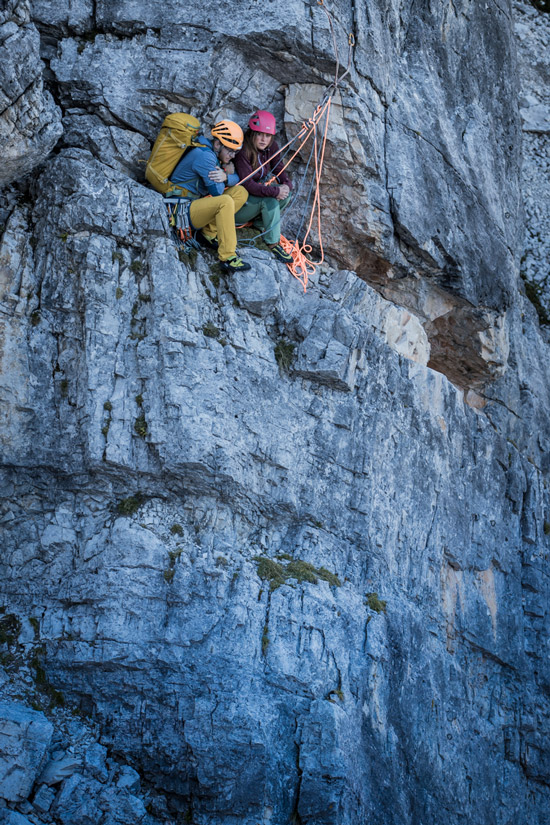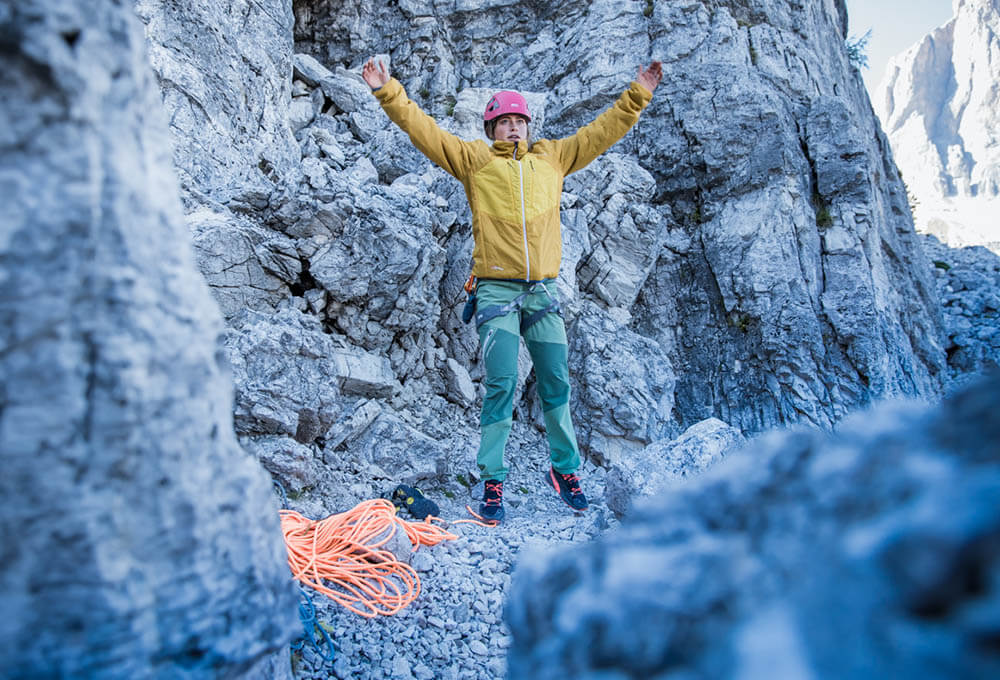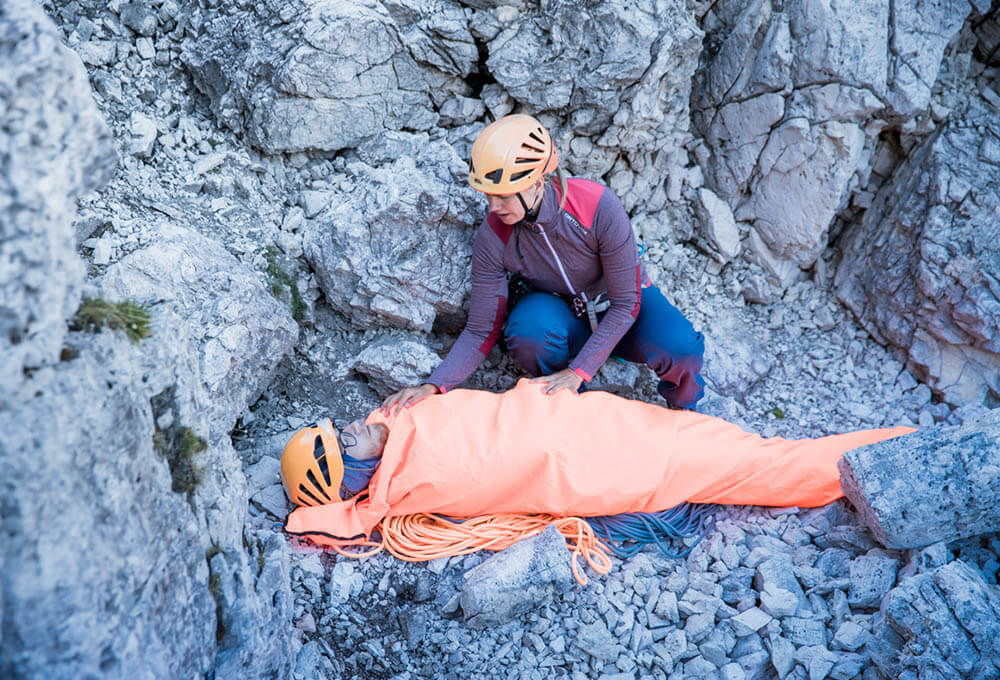Hypothermia
Even in summer, it is possible for climbers to become so severely chilled when climbing that the situation becomes dangerous. At the first sign of feeling cold, it is important to put on warmer clothing immediately. On long, alpine climbing tours in particular it is essential to carry warm, windproof clothing – even if the sun is shining when you set out. The risks can increase significantly as a result of a sudden storm, shade or wind.
Symptoms for the onset of hypothermia include feeling cold, shivering and blueish lips. If there are signs of tiredness or apathy and increased muscle rigidity, the climber is already entering a critical state. As soon as confusion and disorientation sets in, the situation is life threatening.

Hypothermia is subdivided into several degrees of severity. It is crucial, however, to establish whether or not the hypothermic individual is able to move or wants to move unaided. If this is the case, then movement should be physical enough to enable the body, including the arms and legs, to get properly warm. A good way to do this is to perform multiple jumping jacks. Wet clothes should be removed and replaced with as much warm, dry clothing as possible. If available, give the person something warm to drink.

If the hypothermic person is unable or unwilling to keep moving, then do not insist on it. Wrap them up in warm, windproof clothing to prevent any further heat loss. Do not remove wet clothing in this case. This results in too much movement in the arms and legs and runs the risk of mixing cold blood from the extremities with warm blood in the core. To ensure adequate warmth, however, you will need to reposition the person very slowly and carefully, making sure that the arms and legs do not flop about.
An emergency call for a professional rescue team will be required for evacuation to a hospital.


